zeolite
Brilliant_Rock
- Joined
- Aug 13, 2008
- Messages
- 619
Perhaps collection is too strong a word for 3 gems, but I think all 3 are significant. It has been said that “people either love the color or hate it - no one is middle of the road about the yellow-green color”. I guess I’m in the group of loving it.
The original source was the island of Zabargad, off the east coast of Eqypt, in the Red Sea. The largest known cut peridot is the 310 ct round step cut gem in the Smithsonian, and is from this location. About 90% of the world’s production of peridot comes from the San Carlos Indian reservation in eastern Arizona. Small peridot (less than 2 cts) is quite low priced, but the price per carat rises significantly for larger gems.
Ever since Zabargad was depleted, most large peridot came from Burma (also known as Myanmar). This source often had many tiny brownish biotite inclusions, making the gem “sleepy” in appearance. For the last 15 years or so, the finest peridot comes from Pakistan. Small amounts of more pastel peridot, often showing more yellow, come from Tanzania & China.
Peridot’s chemical formula is [Mg, Fe]2 SiO4, and it is one of the very few gems colored by the elements that make up its structure. This property is called idiochromatic. Most colored gems are colored by trace metals that substitute in its basic structure. This property is called allochromatic. Peridot is also one of the very few transparent faceted gems that is attacked by acids. Most transparent faceted gems are not affected by acids. The pickling solutions used by jewelers to remove tarnish from gold alloy, can attack peridot, and should not be used.
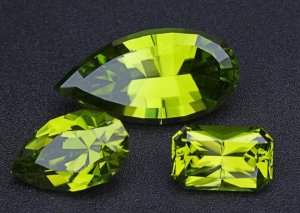
The original source was the island of Zabargad, off the east coast of Eqypt, in the Red Sea. The largest known cut peridot is the 310 ct round step cut gem in the Smithsonian, and is from this location. About 90% of the world’s production of peridot comes from the San Carlos Indian reservation in eastern Arizona. Small peridot (less than 2 cts) is quite low priced, but the price per carat rises significantly for larger gems.
Ever since Zabargad was depleted, most large peridot came from Burma (also known as Myanmar). This source often had many tiny brownish biotite inclusions, making the gem “sleepy” in appearance. For the last 15 years or so, the finest peridot comes from Pakistan. Small amounts of more pastel peridot, often showing more yellow, come from Tanzania & China.
Peridot’s chemical formula is [Mg, Fe]2 SiO4, and it is one of the very few gems colored by the elements that make up its structure. This property is called idiochromatic. Most colored gems are colored by trace metals that substitute in its basic structure. This property is called allochromatic. Peridot is also one of the very few transparent faceted gems that is attacked by acids. Most transparent faceted gems are not affected by acids. The pickling solutions used by jewelers to remove tarnish from gold alloy, can attack peridot, and should not be used.


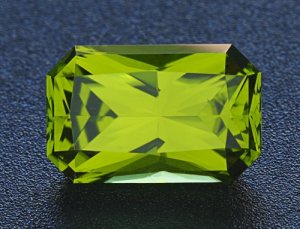
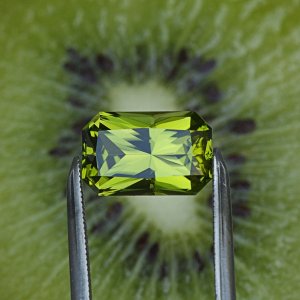
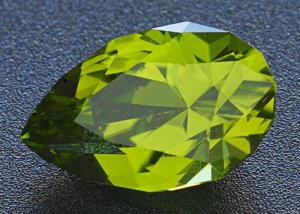
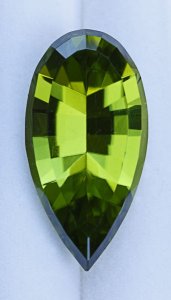


300x240.png)